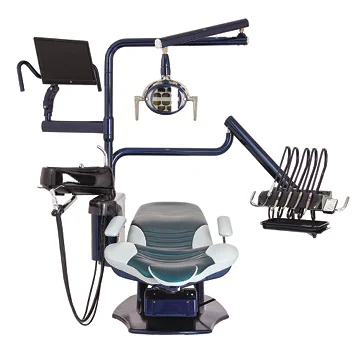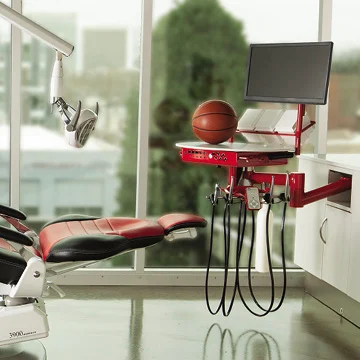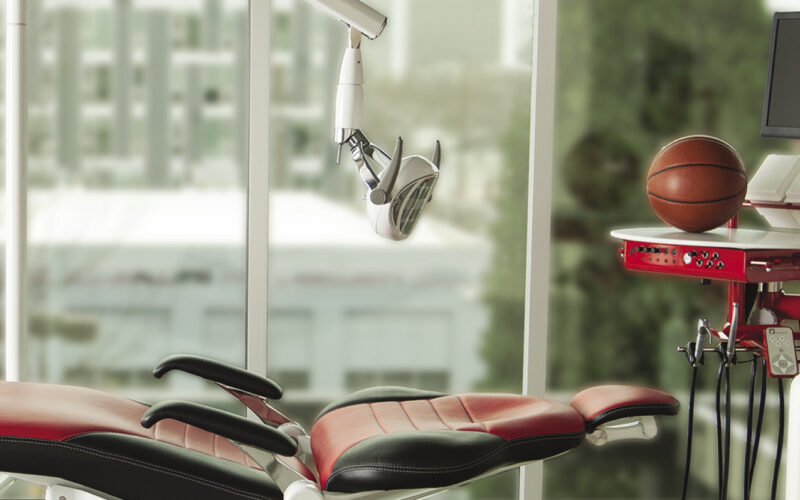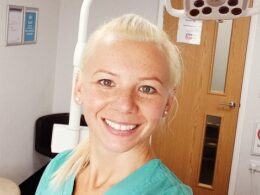The dental delivery system holds a unique place in the dental office. It is one of the few pieces of equipment most visible to patients, while also being very consequential for clinicians in terms of ergonomics and musculoskeletal health. As Dr. Bethany Valachi states in Dental Products Report, “Delivery systems impact the operator’s body mechanics and can result in movement dysfunction and shoulder joint or lower-back problems.” With a dizzying array of options available to address both patient experience and ergonomics, choosing a dental delivery unit can become complicated.
In this article (Part 1 of 2), we will briefly cover what dental delivery systems are and how they work, and then discuss the different types of systems available, highlighting ergonomic considerations. See Part 2 of this guide coming soon for recommendations on how to choose dental delivery unit(s) and an overview of routine maintenance and repair of your systems.
What is a Dental Delivery System?
A dental delivery system, or dental delivery unit, is an apparatus designed to allow dental clinicians ready access to the tools they use to provide dental services to patients. It consists of a console, often topped by an instrument tray, with c-shaped receptacles that hold instruments such as air-driven and electric handpieces, sonic and ultrasonic scalers, syringes, fiber optic and LED lighting, intraoral cameras and curing lights. The assistant’s instruments, including the 3-way air and water syringe, high volume evacuator (HVE) and saliva ejector, are housed close by on a console that may be either integrated or separate.
How Dental Delivery Systems Work
Dental delivery units provide air, water, vacuum and low-voltage electrical power to attached dental devices and accessories. There is a significant difference between a dental unit that integrates all the tools mentioned above and the most basic model, but the majority provide a similar level of functionality.
Pneumatic air and vacuum power supplied to the unit originate in the dental utility or mechanical room. It’s worth noting that air coming into the delivery unit is only as good as the air coming from your dental air compressor. Having a reliable mechanical room means a well-functioning delivery system. Our Guide to Maintenance for Dental Vacuums and Air Compressors details how to keep your DENTALEZ utility equipment in excellent condition.
Water is supplied to the dental delivery system either through a line connected to a municipal water source or from a self-contained clean water system, which uses refillable bottles instead of direct lines. The clean water system is now the most widely used in dentistry because it provides a constant, reliable source of clean water for dental applications and is the easiest to keep clean and free of biofilm contaminants.
Types of Dental Delivery Units
There are many variations of dental delivery units available to suit your practice based on myriad factors, starting with ergonomics and efficiency related to the types of procedures you perform and the patients you serve. Budget, operatory space, existing equipment, aesthetics and personal preference are all important as well.
Chair Mounted (Over-the-Patient) Delivery Systems
Chair mounted (also known as over-the-patient) dental delivery systems attach to the dental chair base. They are often marketed along with the patient chair and operatory light as an all-in-one operatory package, but can also be purchased separately if compatible. Chair mounted delivery units generally come in two configurations, pivoting and fixed.
Pivot (Radius/Magellan/Orbiting)
| Going by many names depending on the manufacturer, chair mounted pivot dental delivery units are mounted on an arm that attaches under the front of the patient chair and comes up and over the front of the patient. The unit can be moved into many different positions to suit the comfort of the dentist. There are also models available with the pivoting arm mounted to the back of the patient chair, but they are rare. |  |
Most of the dental industry today uses this set up, with a pivoting delivery unit for the dentist and a pivoting or rear cabinet mounted vacuum package for the assistant. It is generally considered the most cost effective, convenient, and user-friendly set up because it enables both two-handed and four-handed dentistry and allows the assistant to move freely around the patient.
One drawback to this type of delivery system is that it hovers directly over the patient, so for those who are anxious about dental visits, this set up could be triggering. This also may not be the best system for a specialist who requires additional handpieces and instruments.
Fixed (Console/Sidebox)
| Chair mounted fixed dental delivery systems are like pivoting systems in that the delivery unit hovers over the patient, but instead of the arm rising from below the chair, it is fixed in a console on the left or right side of the chair. Along with the benefits of a pivoting system discussed above, the fixed configuration provides a more stable base for the arms that hold the delivery unit, assistant’s instruments, and monitor. It also provides a stable surface for the addition of a cuspidor. Drawbacks of the chair mounted fixed delivery system are similar to those of the pivoting system, except that it is somewhat less confining for the patient. |  |
Cabinet or Wall Mounted Delivery Units
Cabinet or wall mounted dental delivery units are a good option when a dental practice is building out new treatment rooms or if providing utilities to a patient chair from under the floor is difficult or impossible. However, since they are fixed at the periphery of the room, cabinet mounted units are less versatile than chair mounted for different ways of working. This makes them less ideal for treatment rooms used by multiple practitioners. There are two locations where cabinet mounted units are generally located, relative to the patient chair, with different (and usually proprietary) methods for mounting them.
Rear Dental Delivery Unit (12 o’clock)
| A rear dental delivery unit, sometimes referred to as a 12 o’clock delivery system, is mounted under a cabinet or countertop behind the patient chair. This is considered a better set up for specialists, as it allows them to have all their handpieces and instruments integrated into one efficient workstation. It also may afford a psychological benefit to patient, as they can easily enter and exit the dental chair and won’t be left staring at or bumping the delivery unit once seated. |  |
However, the rear dental delivery system is less common mainly due to its cost. While the unit itself is less expensive than a chair mounted delivery system, the cost can ultimately climb to about twice as much because it usually needs to be purchased and installed with compatible cabinets. Another drawback is that, unless the clinician is practicing true four-handed dentistry, it requires more twisting to reach handpieces and instruments. Moreover, in many standard-sized treatment rooms, this set up is often too large to comfortably work around.
Side Dental Delivery Unit
| Another less common set up for dental delivery is the side dental delivery unit. Although these are still used, especially in dental schools, they are increasingly losing ground to chair mounted delivery systems. Side dental delivery units are mounted to a cabinet or counter at the side of the treatment room and can usually be tucked away when not in use, making them good for small rooms. |  |
Like the rear dental delivery unit, the side delivery system has the advantage of not being in the patient’s face, but unlike the rear unit, it is very specific to a right or left-handed practitioner. And since an assistant cannot reach the instruments, four-handed dentistry is impossible with this set up. Ergonomically, this can be a disadvantage because it forces the dentist to twist and reach for their instruments. Additionally, side dental delivery units are often mounted lower than over-the-patient units, making it harder to remain in a neutral position while working in the oral cavity.
Mobile Delivery Systems
Tethered Mobile Cart
| Some of the disadvantages of cabinet mounted dental delivery systems can be alleviated by mounting the unit on a cart with casters. An umbilical tube attached to the cabinet or wall delivers electricity and air to the unit, while the cart can be positioned wherever it is most convenient for the dental practitioner. Cart mounted delivery units are ideal in a larger treatment room where a standalone patient chair is too distant from the cabinets. |  |
Self-contained Portable Delivery System
| While a cart mounted delivery unit is portable within the dental treatment room, truly portable dental delivery systems are contained in a case that can be carried to any location where dentistry may be needed, such as rural areas, nursing homes, military camps, or anywhere access to a dental clinic is limited. Portable dental delivery units require only an electricity source and have their own air compressor, clean water system, 3-way syringe, saliva ejector, scaler, curing light and foot controller, as well as connections for air-driven and electric handpieces. |  |
Contact DENTALEZ For Your Next Dental Delivery System
A dental delivery system is a workstation that consolidates the water, air, electricity and vacuum power needed to run dental handpieces and other instruments, giving practitioners ready access to the tools they need to care for patients. There are multiple locations where dental delivery units can be installed to create the most efficient and ergonomically advantageous working environment: chair mounted, rear cabinet mounted, side cabinet mounted and semi-mobile carts. Read Part 2 of our guide coming soon to learn about choosing a dental delivery unit for your practice, as well as maintenance and repair tips.
Choosing dental delivery units for your practice involves a thorough evaluation of your current environment considered against the needs and wants of you and your staff, as well as your budget. Dental office design consultants, equipment suppliers and equipment manufacturers can all assist you with the process. We at DENTALEZ invite you to contact us if you have any questions. We’d love to help you find the perfect solution for your needs.









